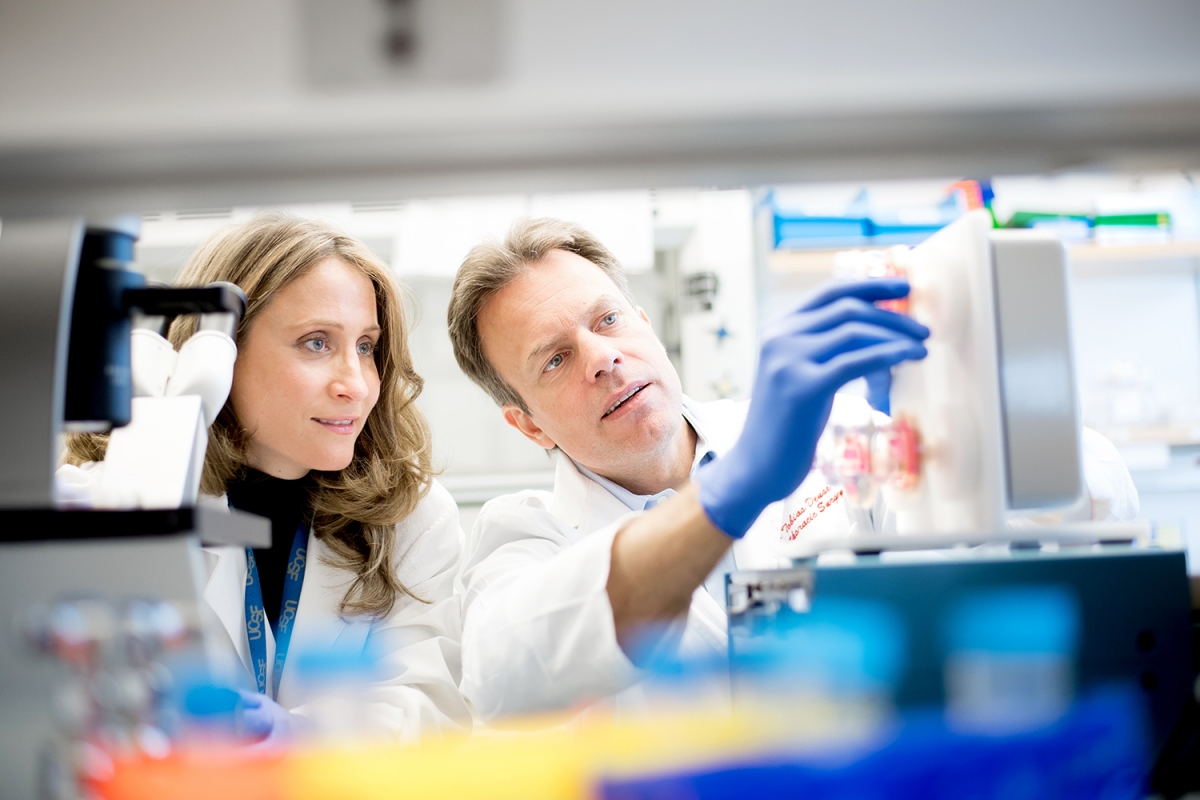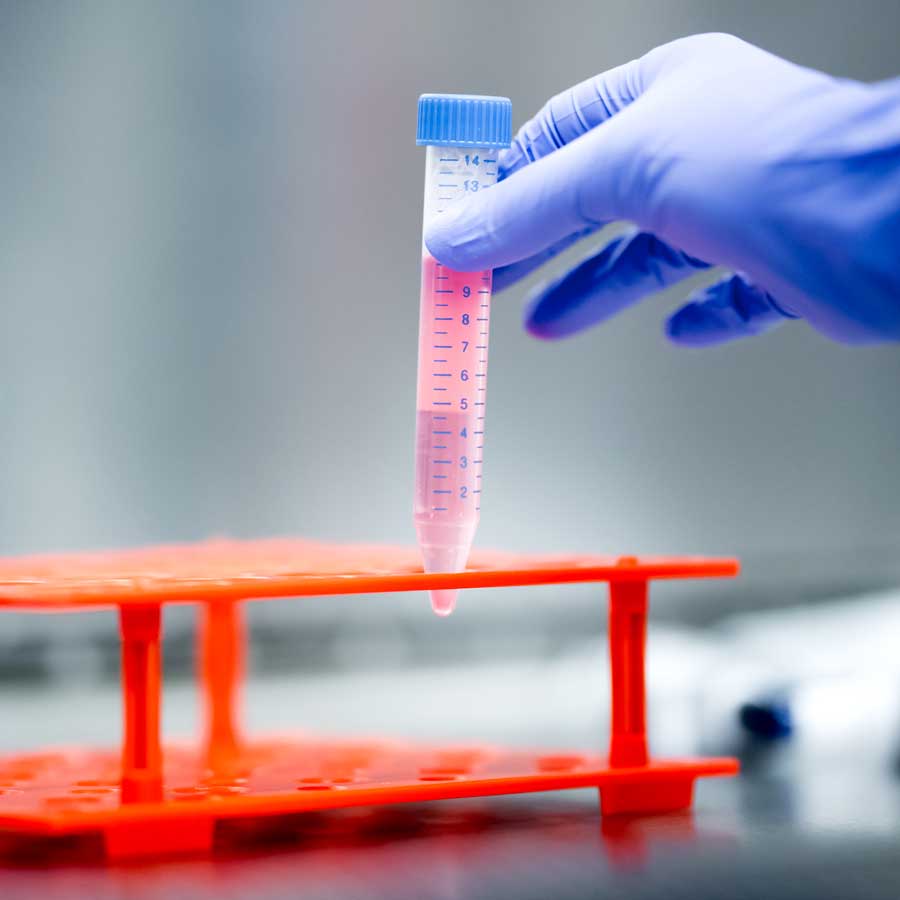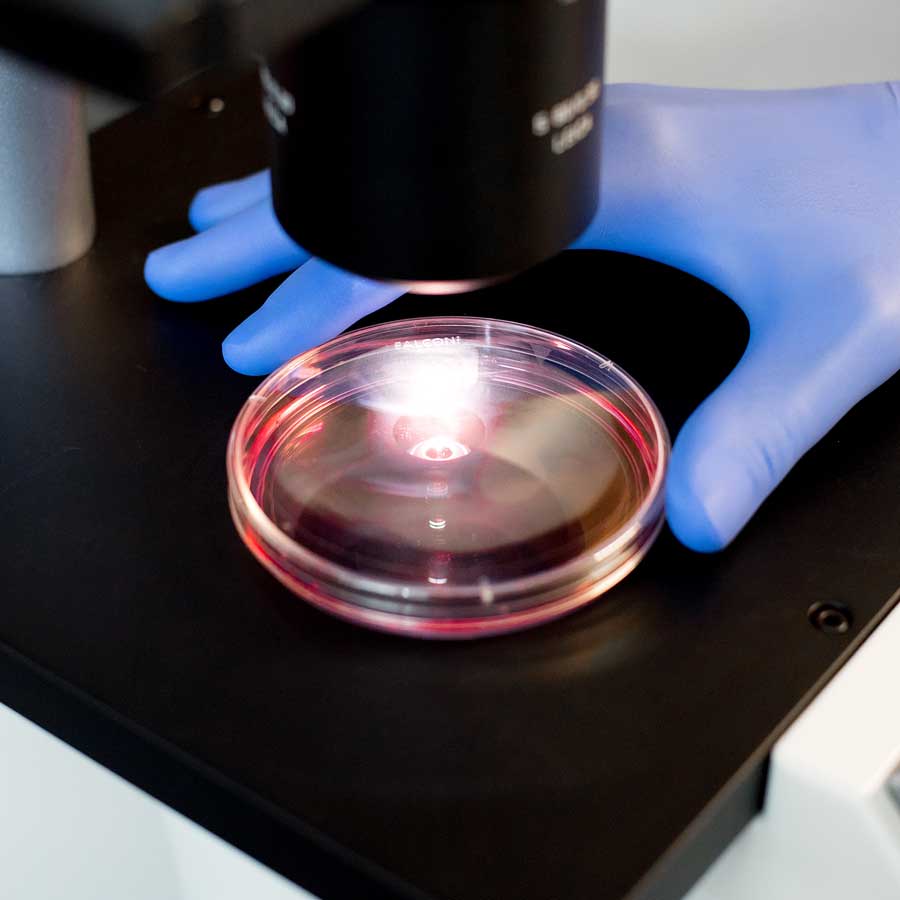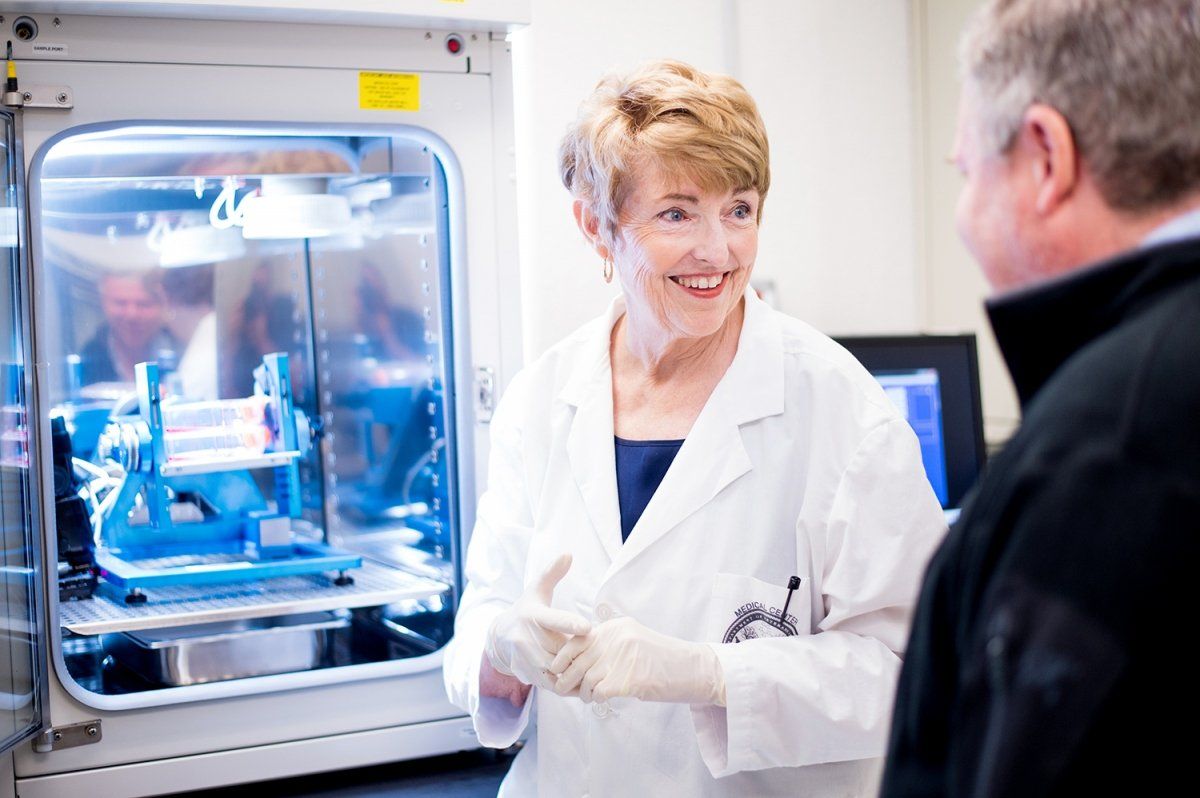When an unmanned NASA spacecraft landed in Fort Lauderdale, Florida, a few days before Christmas 2023, its payload included liver cells from UC San Francisco that had spent two months orbiting Earth on the International Space Station. Physician-researcher Sonja Schrepfer, MD, PhD, sent the cells to the station for astronauts to conduct experiments on. Now, she was eager for their return to her UCSF lab so she could continue her research on how to reverse disease and encourage the human body to regenerate more quickly.
Her work hinges on the fact that the human immune system most effectively protects against illnesses when young T Cells, a type of white blood cells known for fighting infection, team up with stem cells, which have the potential to grow into different cells the body needs. The problem is that when T Cells age their illness-fighting powers wane and they end up taking up valuable space that higher functioning T Cells could be occupying and using to fight illnesses. Schrepfer, director of UCSF's transplant and stem cell immunobiology lab and a professor of surgery, is searching for ways to separate and eliminate old T Cells, making room for young, healthy T Cells.
But finding "old" T Cells to study is difficult, she says, and there is no way to speed up the aging process on Earth. Sending the cells to space makes her research possible.
"Aging is hard to study on Earth. We are interested in the aging of the immune system, but we're not talking about a patient's age or wrinkles, we're looking at the makeup of their cells," says Schrepfer, whose work is part of the UC Space Health program, which brings together more than 150 researchers across disciplines in the University of California system. "I could have a 95-year-old patient with a healthy immune system, or a 35-year-old patient with a tired immune system. We've found that space flight conditions induce aging of immune cells in bone, blood vessels, and the liver, the latter of which is well known for its regenerative properties. This gives us clues about how to prevent aging here on Earth."

Sonja Schrepfer, MD, PhD (left), and Tobias Deuse, MD (right), use a rotator developed by NASA to simulate microgravity at their Parnassus Heights lab.

A research assistant holds a tube with human cells used to study aging in space.

Schrepfer examines human smooth muscle cells.
A bridge between space research and human health
Early studies with mice in space proved that space flight conditions, especially microgravity, aged their immune systems. Since human and mouse immune systems differ, Schrepfer developed a new way to accurately study human immune cells in space. Working with industry partner, Bioserve Inc., she created a device the size of a credit card that allows the different types of cells to interact and gain nutrients in space.
Her lab research influences her patient care, and her patient care, in return, motivates more research. "Patients inspire us to work faster. When we have data in our mind from the lab and then see an actual patient in front of us, it inspires us to think about next steps and new therapeutic strategies," says Schrepfer, whose research team includes Tobias Deuse, MD, Xiaomeng Hu, PhD, Grigol Tediashvili, and Aryana Douraghy.
Bridging the gap between research in space and patients on Earth is at the core of all of UCSF's space health research, says UCSF physician-researcher Aenor Sawyer, MD, director and co-founder of UC Space Health and an associate professor of Orthopaedic Surgery. "We do care about the mysteries and fascination of space science, but we care very much about the applications on Earth. Much like the concept of ROI, return on investment, we call it ROE, return on Earth."
Schrepfer's work with immune cell aging is especially relevant, for example, to the millions of people with cytomegalovirus (CMV), a virus that stays in the body for life. CMV is so common that almost all adults in developing countries and 50% to 85% of adults in the U.S. have been infected before they turn 40. Symptoms in adults can be similar to mononucleosis: fatigue, fever, muscle aches. But most people infected with CMV are asymptomatic, so while they feel healthy, their immune system is constantly fighting the infection in the background - and might age faster than someone not infected with the virus, which Schrepfer is investigating.
Next up: the liver, bone and muscle loss, genomics
Since space exploration began decades ago, it has led to new technology and medical advancements that are now commonplace, like MRIs, breast imaging, ear thermometers, defibrillators and pacemakers, to name a few. The need to transport a device to space has also inspired breakthroughs in making technology smaller, more efficient and effective across long distances. On Earth, this translates to new treatments and helps bring better health care to remote communities.

UCSF researchers continually explore a wide range of space-related research, as they build on the legacy of Millie Hughes-Fulford - the late UCSF professor who was the first American woman to launch into space as a working scientist for NASA. In June 1991, Hughes-Fulford flew aboard the first space shuttle mission dedicated to biomedical studies. She conducted experiments about the impact of weightlessness on astronauts' immune systems and loss of bone mass. Among other UCSF space researchers, Tammy Chang, MD, is developing liver organoids, a complex functioning liver model that could become an alternative to transplants. Jeff Lotz, PhD, Jeannie Bailey, PhD, Thomas Lang, PhD, and Aenor Sawyer, MD, focus on bone and muscle loss in microgravity, which impacts care of patients with back pain, osteoporosis or limited mobility. Sawyer and Sigurd Berven, MD, are developing new terrestrial and spaceflight applications for ultrasound-based bone health diagnostic tools and Charles Chiu, MD, PhD, is doing first-of-its-kind genomics work on the International Space Station with astronaut Kate Rubins, PhD.
Collaboration is key in space health research, says Sawyer, which is why she is helping to develop space health and space biology teams, at the new Berkeley Space Center. The Center, being built at Moffett Field near San Jose, will bring together scientists from academia, industry and NASA.
"In the UC Space Health Program, we support and create connectivity between our UC researchers and work closely with NASA and external collaborators to provide education and career opportunities," Sawyer says. "The human spaceflight environment is a forcing function, or an edge case, for health care, especially in remote and resource-constrained settings. It advances our knowledge and accelerates the development of new capabilities for better health care on Earth."






